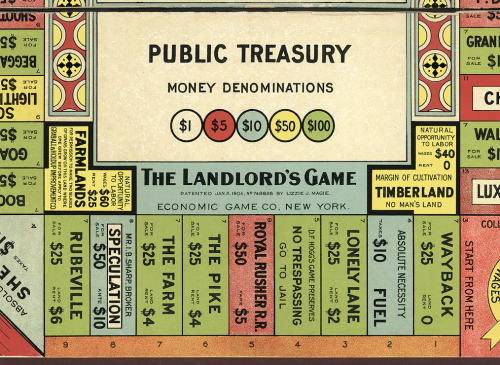It is positively eerie for a baby boomer like me to hear talk of a possible “Depression” in Canada. Having come of age in exceedingly prosperous times and conditioned to believe that life would only get better, my generation is undoubtedly aghast at the prospect of revisiting—first hand—the challenges faced by our parents and grandparents in that woebegone era.
How did universities fare during the 1930s, and is there anything instructive today’s academics can learn from those years about what may lie ahead? Are you ready to ponder the once-imponderable?
A modest collection of denominational and secular institutions, universities in early twentieth-century Canada served a comparatively small part of the population. Some 2.8 per cent of the 20-24 year old age group attended universities in 1930, which enrolled, in total 33,000 students. Most students came from middleclass backgrounds, though they were far from uniformly affluent. Like today’s students, they aspired to “respectable” and financially-secure professional careers. Before the Depression,in a country where a high school diploma was still a relative rarity, university graduates would have fared well.
History demonstrates that in poor economic times, those able to pay the fees seek to enhance their educational credentials in anticipation of better days ahead.
But the economic collapse disrupted many grand plans. Jobs, even for university graduates, dried up. Many dropped out, and a significant number of those who remained in university faced severe financial challenges. At the University of Saskatchewan in 1934, the administration accepted promissory notes from one-third of its students because they were unable to pay their fees. There was practically no student assistance available across the country, and individual professors were known to lend or give individual students funds on an ad hoc basis.
Universities themselves could do little to ease the plight of the financially challenged. Budgets were cut everywhere. Between 1930 and 1935, university operating revenue declined by almost 30 per cent. The University of Manitoba’s fiscal plight was compounded by the machinations of the institution’s bursar, who was found to have embezzled close to $1 million. (He died in prison following his arrest.)
Notwithstanding these crises, the universities survivedthe Depression, diminished but intact. No institutions were closed; indeed enrolments rose by some 10 per cent during the period. History demonstrates that in poor economic times, those able to pay the fees seek to enhance their educational credentials in anticipation of better days ahead. From an employment perspective, that day came with the Second World War, which enlisted tens of thousands of young Canadians, with or without university education.
By most measures, full-time university professors managed relatively well during the 1930s, particularly in light of declining prices for consumer goods. A national survey in 1937 found that three-quarters of faculty earned more than $2,500 per year. The average national wage was $965. On the other hand, there were casualties. A number of faculty at the University of British Columbia and Acadia University lost their positions. In the wake of the embezzlement scandal, the University of Manitoba suspended the practice of tenure in 1934 and issued only one-year contracts for a number of years. Salaries were cut at the University of Toronto, and McGill was one of several universities that ended professors’ right to teach beyond age 65. Faculty and staff who worked part-time, in libraries or as laboratory assistants (which included many women), were rarely renewed. Full-time hiring was essentially frozen, so professors worked hard, teaching 15 to 18 hours per week (at least twice the load of faculty today).
Furthermore, as Michiel Horn explains in Academic Freedom in Canada: A History, faculty who were politically outspoken—and left wing—were especially vulnerable during the Depression. Several, most notoriously, University of Toronto historian Frank Underhill, were reprimanded, or worse, for expressing politically incorrect views on such topics as Canada’s relations with Britain, immigration, and the capitalist system. Most held on to their jobs. But Eugene Forsey and Leonard Marsh, of McGill, and J. King Gordon, of Montreal’s United Theological College, did not.
What does any of this tell us about the university’s prospects in the wake of a new Depression? History, of course, never replicates itself entirely, but there would be some haunting echoes. Students, whose current participation in postsecondary education exceeds the rate in the 1930s by a factor of about 10, would be likely to endure the heaviest burden. Since higher education is already considered essential (but not a guarantee) for securing high-quality employment, they will do all they can to complete their degrees and will, increasingly, consider enrolling in graduate school as an added credential hedge against the future. But unless they have very affluent parents, they will feel the weight and stress of accumulating debt, with limited immediate job prospects, except, perhaps, in very select fields (e.g. medicine, law enforcement).
Universities and government will continue to provide scholarships, bursaries, and loans, but the amount available will not match the growing needs. Unless enrolment declines dramatically, universities will not lower tuition fees because their own revenues from government will be reduced.
Hiring of full-time faculty will diminish or be frozen, particularly in institutions with deep (possibly structural) deficits. (A lot of this is not terribly difficult to predict, since in some institutions, it is already happening.)
But there are some critical differences between then and now that might well blunt the impact on universities of a severe economic downturn. First, faculty associations will do everything in their power—short of striking—to preserve fulltime jobs and protect professors’ academic freedoms. Some positions may be lost, but collective agreements should ensure that transparent processes are followed. Owing to seniority provisions, contract and newly hired faculty will be the most vulnerable.
Second, universities are viewed by politicians as important instruments of economic growth and development. To some degree, this has always been true—but they are now perceived to be key drivers of the “knowledge economy” in a “globalized” environment, something which takes on added importance as manufacturing jobs continue to disappear.
I think there is a good deal of sheer rhetoric and mythology associated with the knowledge economy argument, but it remains the universities’ strongest bargaining chip in the marketplace and in politics. Indeed, during a Depression, education’s social standing may well grow if it is considered essential to economic recovery.
Owing to seniority provisions, contract and newly hired faculty will be the most vulnerable.
Whatever their long-term economic value, universities and colleges are of far more immediate importance to local economies than they were in the 1930s. For that reason alone, they are likely to be protected. In Ontario, communities such as Windsor, St. Catharine’s, Peterborough, and Thunder Bay, where job losses have been very severe, postsecondary education is an especially vital employer, and, in large centres (Toronto, Montreal, Vancouver), the educational institutions provide some economic stability in otherwise wobbly conditions.
Like every other institution, universities will be affected by macro-economic decision-making. During the Depression, it took a number of years for governments to ramp up public spending, and deficit financing was never really adopted until World War II. By contrast, the member countries of the G-20 have already indicated their willingness to prime the economic pump, as indicated by the enormous stimulus packages announced in Europe, China, and the U.S. in November of 2008. In this context, viable, public institutions, like schools, colleges, and universities, which provide employment and contribute to the country’s intellectual capital, are likely to be perceived as part of the solution, not the problem.
What lies ahead for those who work in universities in a 21st century Depression? Lots of pain and grief, but probably less than for those who work—or who once did—elsewhere. AM
Paul Axelrod is a historian and professor in the Faculty of Education at York University and the author of Making a Middle Class: Student Life in English Canada during the Thirties.










